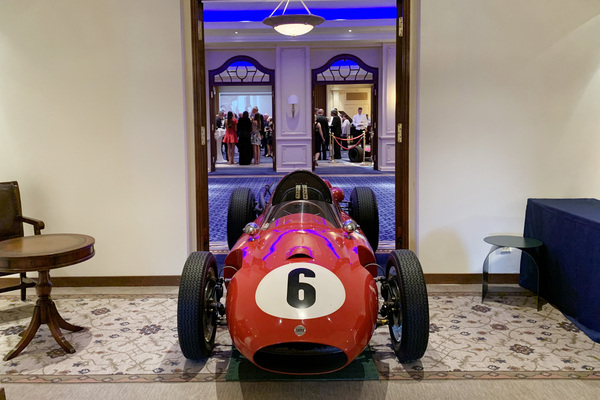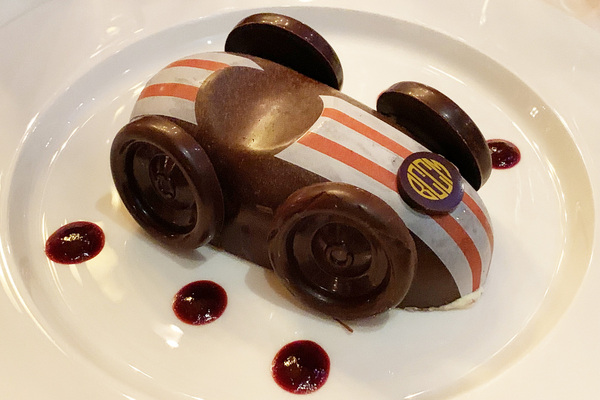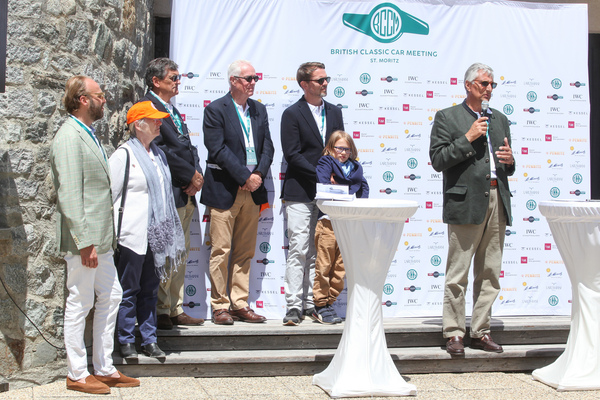Not every classic car event can look back on 27 previous events, but the British Classic Car Meeting St. Moritz can. It took place for the 28th time from July 8 to 10, 2022 and continues to enjoy great success with over 100 participating vehicles. Last time, a BCCM with a theme was held for the first time after the pandemic: "The Italian Job Edition" was themed around the famous film from the late 1960s about a gold room in Turin.
Dedicated to the film "Grand Prix"
For 2022, the film was again based on a movie, with the Frankenheimer film from 1966 being chosen, which revolved around the Formula 1 of the time and caused quite a stir at the time, particularly due to its thrilling racing scenes. There was also a star-studded cast with James Garner, Yves Montand, Françoise Hardy and Toshirō Mifune, but the well-known actors were more of a supporting role alongside the impressive driving scenes in the film. There were even real racing drivers in the movie, such as Graham Hill and Juan-Manuel Fangio. And you could even catch a glimpse of the Ferrari racing department.

In keeping with this film, not only did the event poster designed by Christian Papazoglakis in the Michel Vaillant style show a Formula car, but such cars were also set up in various places at the gala dinner on Saturday evening at Suvretta House.

And even the dessert at the end of the evening consisted of a chocolate-filled Monoposto.

Rally on Saturday
Of course, the participants of the 28th BCCM did not compete in single-seaters, nor did they drive a circuit race. As has been the case for many years, a comparatively leisurely drive over the surrounding mountain passes was the order of the day on Saturday. The route led from St. Moritz via Zernez, Schuol and the Reschen Pass to Mals, Glurns, St. Maria and over the Ofen Pass back to Zernez and St. Moritz.
The varied route covered 200 km and took around six hours of pure riding time. There were also special stages to test the participants' consistency and riding skills. All deviations were added up to give the penalty points, taking into account an age coefficient.
It was Stefano Valente with his 1937 Riley Sprite who mastered the stages most accurately and thus won the rally classification and an IWC watch.
The rare Riley Sprite
Riley Motors built just over 50 examples of the pre-war Sprite in Coventry. The rare model adopted elements of the Imp and MPH sports cars and was equipped with four and six-cylinder engines. Valente's Sprite dates back to 1936 and was obviously in excellent condition.
And because the car still looks really good, it also won the pre-war category of the beauty contest on Sunday.
The concours on Sunday
While Saturday was all about driving, Sunday was all about resting and watching. The cars were lined up in the garden of Suvretta House from the early morning and compared and judged by an international jury, which included former Rolls-Royce head of design Ian Cameron and British ambassador Jane Owen.

This was no easy task due to the large number of similar cars and the diversity of the largest class, namely the cars built between 1946 and 1980.

The winner in the post-war class was a Rolls-Royce Silver Wraith from 1952, which not only distinguished itself from other Rolls of the time with its bodywork by H.J. Mulliner and some special features, but also by the fact that the car had already been used for trips to St. Moritz in the 1950s. This Rolls also won the "Best of Show" award.
No first place was awarded for the more modern cars after 1980, as several cars unfortunately did not find their way into the Suvretta House garden.
However, some special prizes were awarded. Georg Dönni's Bond Bug 700 ES, for example, received a prize for "Bondnes"; it could also have been awarded a prize for the most beautiful orange car at the Concours. In addition, Dönni had shown at the rally that three wheels are not always as stable as four, which did not do the color of the small car any good.
Philip Husistein's very authentic and almost completely original unrestored Jaguar XK 140 OTS from 1957 was also honored.
A special prize was also awarded to a once not at all rare car, the Triumph Spitfire. Nathalie Salibian-Waltz's example from 1980 is probably one of the few that has never changed hands and has not yet covered 40,000 km. Completely unrestored and with all the weaknesses of British Leyland production at the time, it stood there and impressed the jury.
The prize for the longest journey was awarded to Briton Richard Beddall, who had traveled over 1,300 km in his 1957 Bentley S1 James Young Coupé to get to St. Moritz. When presenting the prize, the eloquent Londoner said that his car had thoroughly enjoyed the trip to Switzerland, after all, this exact vehicle was presented at the Geneva Motor Show in 1957 and the car had also spent the night with a Jaguar XJ 4.2 Coupé ...
Three days of Britishness
These were truly British days, apart from the consistently beautiful weather, which showed St. Moritz at its best.
The field of over 100 cars naturally included the traditional BCCM brands Aston Martin, Austin-Healey, Bentley, Jaguar/Daimler and Rolls-Royce, but also the "other makes", which provided plenty of color in the field.
A Lotus Eleven S1 from 1956 was among the cars in the field, as was an MG TB with Tickford bodywork from 1939.
The spectrum ranged from the Triumph 2000 Roadster from 1949 to the TVR Griffith from 1999, as well as sports cars from Triumph and Morgan. The participants certainly had plenty to talk about during the various aperitifs and meals, with one vehicle or another always providing an opportunity for discussion.















































































































































































































































































































































































